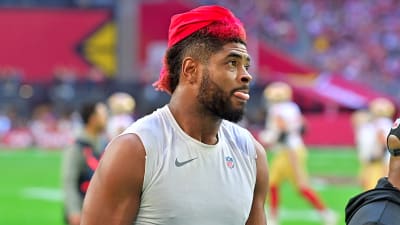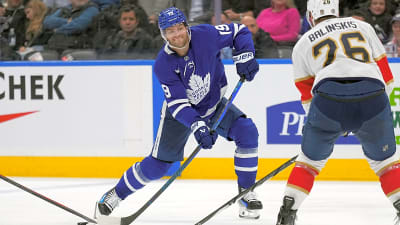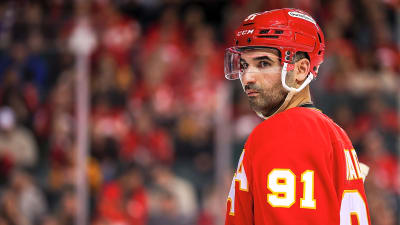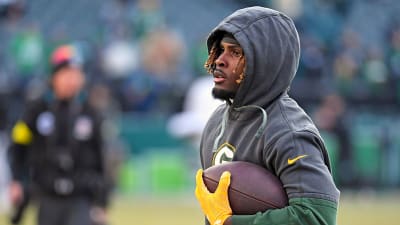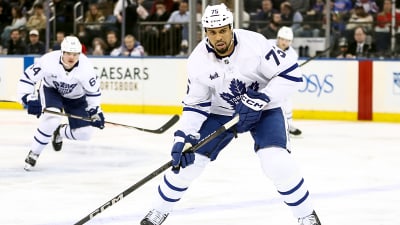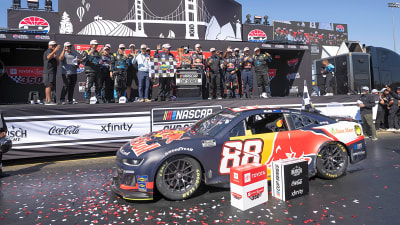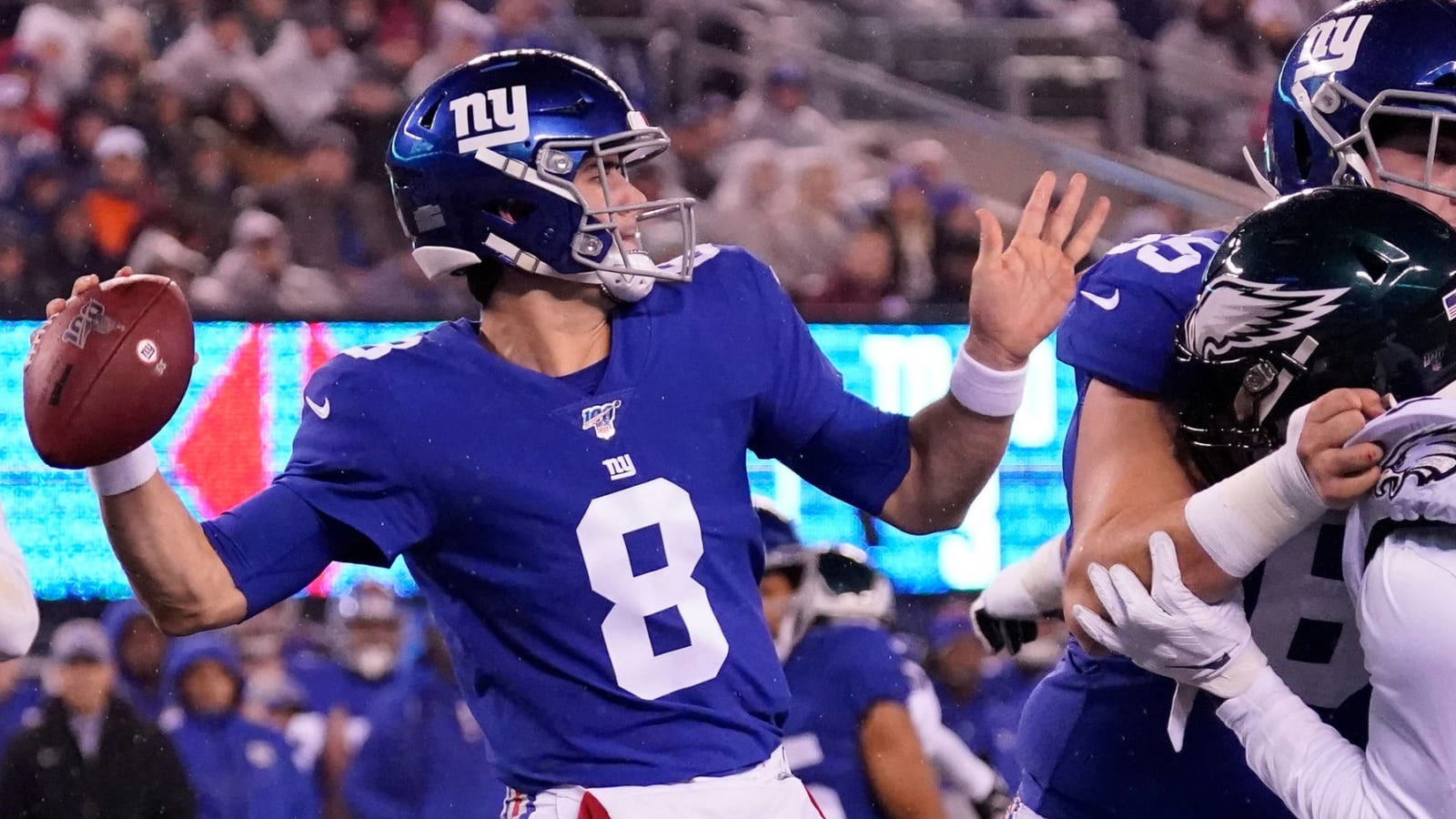
Every throw graded: Ultimate scouting report of Giants' Daniel Jones
Rookie quarterback Daniel Jones took the reins from Eli Manning last season, showing flashes of brilliance and stretches of awful play. Although Jones threw for 24 touchdowns and ran for two more, he also was intercepted 12 times and fumbled 18 times.
More Ultimate scouting reports: Patrick Mahomes | Jimmy Garoppolo | Tom Brady | Josh Allen | Baker Mayfield | Sam Darnold
As Jones heads into Year 2, the NFL world seems undecided about him. Is he a mediocre prospect unworthy of his selection with the sixth overall pick in the 2019 NFL Draft? Or does he have the potential to be a top-flight QB?
To help answer those questions, I watched All-22 angles of every play from Jones’ 2019 season, grading each one (excluding handoffs) to gauge his true overall performance. By taking into account drops, pressure, throw difficulty, ball placement, down/distance, game situation and decision-making (did the quarterback choose the best option available?), we get a better evaluation of the quarterback’s true performance than from a box score.
I scored each one of Jones’ plays on a 0-to-10 scale. An average play (screen passes, throwaways) received a 5, a brutal play (awful turnovers or should-be turnovers) earned a 0, and the perfect play (flawlessly placed throws into tight windows under heavy pressure) warranted a 10. Most plays fall somewhere in the middle, with “plus” efforts scoring above 5 and “minus” efforts below. Each game’s final score was scaled from 0-100, with 50 being average.
Let’s dig into Jones’ 2019 season.
BEST GAME: Week 13 vs. Packers (58.2 grade)
Jones, who took over for Manning in Week 3, had a promising finish to his rookie season, earning three of my best four grades in his final three games. His best performance by far was in Week 13, a 31-13 loss to the Packers. Jones started hot, waded through a rocky second quarter, and recaptured his magic in the second half. He frequently displayed his best trait: dropping deep balls into tight windows while under heavy pressure.
Here, Jones connects with wide receiver Sterling Shepard for a touchdown while absorbing a crushing hit. This is excellent touch and poise.
— Yardbarker All-22 (@22Yardbarker) March 10, 2020
The Packers game was easily Jones’ most underrated by the box score. He earned a 49.4 passer rating, his second worst of the season, and averaged only 6.5 yards per attempt. Jones was intercepted three times -- one was hardly his fault -- and several of his throws were dropped. This game was the best glimpse of Jones’ ceiling.
WORST GAME: Week 6 vs. Patriots (27.7 grade)
Jones was among several young quarterbacks who had a terrible outing against New England's elite defense last season. While Jones’ consistency was only slightly below average overall (I tagged him with a 1.08 positive-to-negative play ratio; average is about 1.4), it was three horrendously baffling mistakes that sunk him in the Giants' 35-14 loss.
Jones, who went 15-for-31 for 165 yards passing, tossed three interceptions –- one of which was slightly unlucky -– and had a dropped interception, too. Here, Jones locks on to wide receiver Cody Latimer’s slant route, and cornerback Stephon Gilmore reads it all the way. Gilmore gets two hands on the ball, but he drops the ball.
— Yardbarker All-22 (@22Yardbarker) March 10, 2020
One of Jones’ biggest problems in 2019 was an inability to read the field. He frequently went through his reads too slowly and chose the wrong passing option.
MOST UNDERRATED GAME BY BOX SCORE: Week 17 vs. Eagles (51 grade)
Jones’ performance against the Packers doubled as his best and most underrated performance, so we looked at the 34-17 loss to the Eagles for this category. I gave Jones a 51 grade, his second-best mark of the season. (His 76.6 passer rating ranked as his fifth worst of 2019.) What did the box score miss? Jones’ failed plays were hardly his fault. New York’s receivers gained little separation, and its pass protection was terrible. When things went wrong, Jones was hardly to blame.
On the flip side, Jones put together a solid reel of peak moments. Any conversation about Jones’ potential must start with his deep touch. You already saw his dime to Shepard above. This touchdown to Golden Tate may be even better. Jones scrambles to his left after nothing opens up, and fires while off-balance with pressure bearing down. He drops the ball into Tate’s chest for a TD over air-tight coverage by cornerback Rasul Douglas, who was called for pass interference.
— Yardbarker All-22 (@22Yardbarker) March 10, 2020
MOST OVERRATED GAME BY BOX SCORE: Week 10 at Jets (31.8 grade)
Overrated box score lines were a theme for Jones throughout the season. He benefited from long runs after the catch on easy completions and excellent screen game production. But he was plagued by fumbling issues, missed reads and "faulty" sacks.
In a 34-27 loss to the Jets, Jones put up a statline that made plenty of fantasy owners happy (308 yards, four touchdowns, zero interceptions, 121.7 passer rating). But his performance was poor overall.
Jones’ four touchdown passes averaged 30 yards -– 3.8 yards through the air, 26.2 after the catch. One was a screen pass, two were wide-open slants on which 78% of the yardage came after the catch, and the other was a pass play over the middle in which Jones had more than four seconds to stand in the pocket without pressure. These plays make Jones’ stats look great -– and kudos to him for executing the plays -– but the offensive line, coaching staff, and receivers all played a much bigger part in making those scores happen.
Jones’ top-notch passer rating does not account for how much he hurt the team with his pocket presence. He took seven sacks (one wiped out by an away-from-the-play penalty); on six of them, he held the ball far too long.
Jones also fumbled three times, two during sacks by safety Jamal Adams. The second was returned for a touchdown. Below, Jones hangs in the pocket far too long. Tate (from right to left) is open on a deep-over route, and Darius Slayton (from left to right) is open on a dig route. Both players have ample separation for a huge pickup on 3rd and 1. What is Jones waiting for?
— Yardbarker All-22 (@22Yardbarker) March 10, 2020
In Year 2, Jones must improve his anticipation and processing speed. He took far too many sacks, fumbled far too many times, and missed on countless big-play opportunities because of his inability to get the ball out quickly enough.
BEST PLAY
Jones had many tight-window completions that traveled at least 30 yards (promising for a rookie quarterback), so it was tough to choose the best. On this throw in his starting debut, a 32-31 win over Tampa Bay, Jones faces instant pressure out of the play-action fake and must scramble left. While sliding to his off side directly into a defender, Jones lobs it up and hits Slayton in stride for a 46-yard gain. The throw traveled 42 yards from release to the catch. Big-time stuff.
— Yardbarker All-22 (@22Yardbarker) March 10, 2020
WORST PLAY
Jones has the tendency to go into all-or-nothing mode in dire situations.
This interception on 1st & 10 against the Patriots is an example of a play in which Jones was much too aggressive. He gets ample time and space as the Giants protect with eight men against four rushers, but nothing opens up downfield as only two receivers run routes against seven defenders. Jones must toss the ball out of bounds and move on. Instead, he allows the pressure time to get to him and makes a hasty throw under duress. He tosses the ball directly to safety Duron Harmon, who was about 20 yards away from the nearest Giant. This is as brutal as it gets.
— Yardbarker All-22 (@22Yardbarker) March 10, 2020
Q&A: What are Jones’ biggest strengths?
As noted, Jones has fine deep-ball prowess; his mobility is a plus, too. He has good speed (4.81 40-yard dash at NFL scouting combine), and the Giants took advantage of it by giving him a steady diet of read-option opportunities. When Jones scrambled, he was usually able to outrun most defenders. If Jones can round out the mental side of his game, he has a unique combination of downfield talent and mobility that potentially gives him a high ceiling.
What are Jones’ greatest weaknesses?
For starters, his internal clock must get a tick faster. Jones led the NFL with 18 fumbles and ranked second with 22.7 sack yards per game (among quarterbacks with at least 10 starts). The Giants’ offensive line was bad, but Jones deserves much of the blame for those numbers. He often stood in the pocket far too long. He also must move from read to read faster, and throw before receivers break open rather than waiting for them to be open. This is how he can fix the fumbling problem. Rushers got far too many shots at him while he was mid-windup.
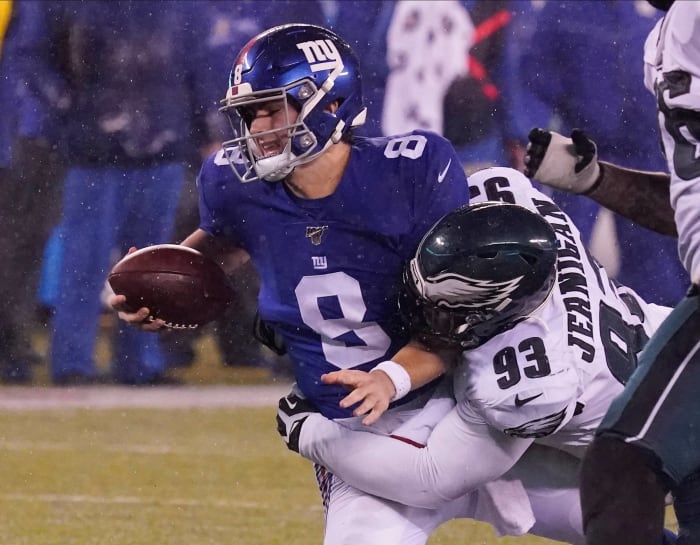
What can the Giants do to help Jones?
Improve the offensive line. Jones was pressured on 41.56% of dropbacks in 2019, the second-highest rate among qualified quarterbacks, behind only the Jets' Sam Darnold. That number was largely on Jones because of his poor pocket presence, but the Giants’ offensive line ranked 23rd in pass-blocking efficiency (pressure rate filtering out pressures that are not the offensive line’s fault). In particular, the Giants must improve at center, where impending free agent Jon Halapio allowed the sixth-most pressures at the position (26) last season.
Where will Jones stack up in 2020?
After digging into Jones' season, I was not impressed. His biggest issues may not be fixable. I'm skeptical that he can develop the requisite level of instinct and wherewithal that an NFL quarterback needs to be successful. He hasn't thrown 500 passes yet in the league -- a good benchmark for judging a quarterback. I'm eager to see him perform with a vastly improved supporting cast. But I wouldn't be surprised if he's a below-average starter in 2020 ... and throughout his NFL career.
More must-reads:
- Every throw graded: Ultimate scouting report of Jets' Sam Darnold
- Every throw graded: Ultimate scouting report of Browns' Baker Mayfield
- The 'NFL Offensive Rookie of the Year winners' quiz
Breaking News
Trending News
Customize Your Newsletter
 +
+
Get the latest news and rumors, customized to your favorite sports and teams. Emailed daily. Always free!
